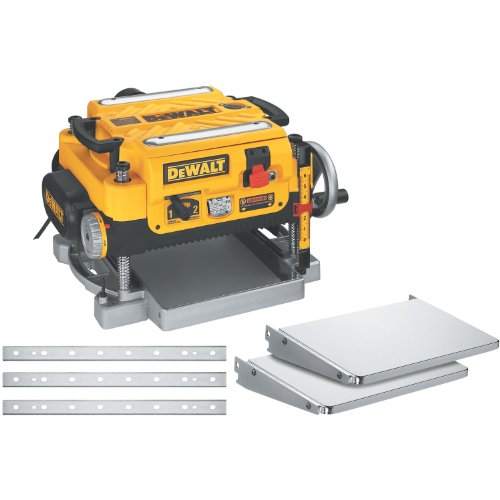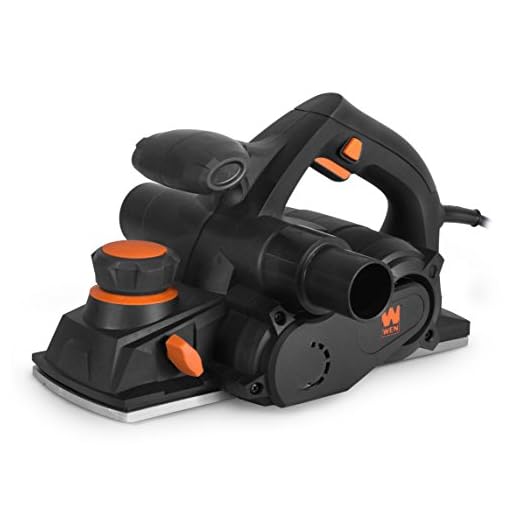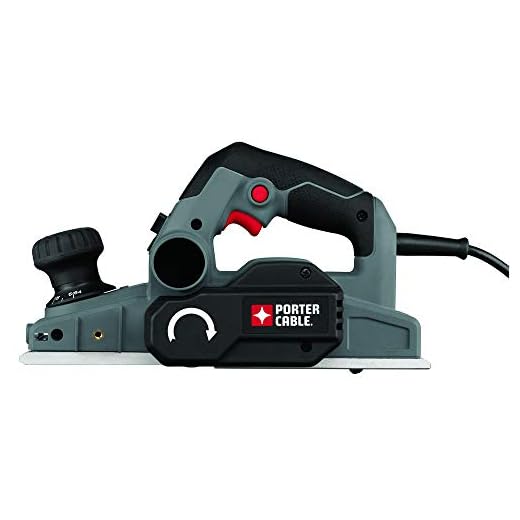Are you ready to take your woodworking projects to the next level? If so, it’s essential to have the right tools at your disposal. And when it comes to planers, selecting the perfect one is crucial. But with so many options available, how do you know which planer is the right fit for your needs? Don’t worry, we’re here to help!
In this blog post, we’ll walk you through the important factors to consider when choosing a planer for your woodworking projects. By the end, you’ll feel confident in your decision and ready to tackle any project that comes your way. Let’s get started!
Top-Rated Woodworking Planers – Achieve Smooth and Flawless Surfaces!
Understanding Different Types of Planers
When it comes to woodworking, having the right tools can greatly enhance your projects. One essential tool every woodworker should have is a planer. A planer is used to make smooth and even surfaces on wood, allowing you to achieve the desired thickness and shape.
In this section, we will explore the various types of planers available in the market, their features, benefits, and limitations. Armed with this knowledge, you’ll be able to make an informed decision on which planer is right for you.
Handheld Planers
Handheld planers are portable and versatile tools that are perfect for smaller woodworking projects or on-the-go jobs. They feature a cutting blade that rotates at high speeds to remove material from the surface of the wood.
Here are some key features and benefits of handheld planers:
- Portability: Handheld planers are lightweight and easy to carry around, allowing you to take them to your job site or move them around your workshop with ease.
- Control: With a handheld planer, you have more control over the depth and direction of the cuts, allowing you to achieve the desired results quickly.
- Precision: Handheld planers allow you to make precise adjustments, ensuring you get a smooth and even surface on your wood.
- Affordability: Handheld planers are generally more affordable compared to their benchtop counterparts, making them a great option for beginners or those on a budget.
It’s important to keep in mind that handheld planers may not be suitable for larger projects that require consistent thickness throughout the wood.
Benchtop Planers
If you’re looking for a planer that can handle larger projects and provide more consistent results, a benchtop planer might be the right choice for you. These planers are stationary and sit on a workbench or stand. Here’s what you need to know about benchtop planers:
- Power and Capacity: Benchtop planers are designed to handle larger pieces of wood and can make deeper or wider cuts compared to handheld planers.
- Consistency: Benchtop planers have adjustable infeed and outfeed tables and a feed roller system that ensures consistent thickness and smooth surfaces across the entire piece of wood.
- Dust Collection: Many benchtop planers come with built-in dust collection ports, keeping your workspace clean and reducing the need for additional cleanup.
While benchtop planers offer more power and precision, they require a dedicated space and are generally more expensive than handheld planers.
Thickness Planers
If your primary goal is to achieve consistent thickness throughout your wood, a thickness planer should be your go-to tool. These planers specialize in reducing the thickness of rough lumber, producing uniform thickness for all your woodworking projects. Here’s what you need to know about thickness planers:
- Uniform Thickness: Thickness planers allow you to feed rough lumber through the machine, removing material to achieve the desired thickness consistently.
- Versatility: These planers can handle a wide range of wood types and sizes, making them suitable for various woodworking projects.
- Time-saving: By reducing the thickness of rough lumber efficiently, thickness planers can save you considerable time compared to traditional hand planing methods.
It’s important to note that thickness planers are not designed for making wide, shallow cuts like handheld or benchtop planers. Their main purpose is to ensure consistent thickness.
In conclusion, understanding the different types of planers available is crucial in selecting the right tool for your woodworking needs.
Whether you choose a handheld planer for its portability, a benchtop planer for its power and precision, or a thickness planer for consistent thickness, having the right planer at your disposal will greatly enhance your woodworking experience. So, consider your specific needs and shop wisely!
Considerations for Planer Size and Capacity
When it comes to choosing a planer for your woodworking projects, there are several important considerations you should keep in mind.
One of the key factors to consider is the size and capacity of the planer. In this article, we will explore why these factors matter and how they can impact your woodworking experience.
The Importance of Planer Size
The size of a planer refers to the maximum width of wood that the machine can accommodate. It is crucial to choose a planer with a size that aligns with the type of projects you typically work on.
Here are a few key points to consider:
- Woodworking projects: Think about the average size of the projects you work on. If you mainly work on smaller projects, such as making furniture components or trim pieces, a planer with a narrower width capacity, such as 12 inches, may be sufficient. However, if you often tackle larger projects like dining tables or cabinets, you might want to consider a planer with a wider width capacity, such as 20 inches.
- Flexibility and convenience: Investing in a planer with a larger width capacity can provide more flexibility for future projects. Even if you currently work on smaller projects, there may be occasions where you need to plane wider materials. Having a planer with a larger size can help accommodate such situations without limitations.
- Brand recommendations: Some popular planer brands that offer a range of sizes include DeWalt, Makita, and Jet. It’s worthwhile to explore the models offered by these brands and check the width capacity they provide.
Understanding Planer Capacity
While planer size refers to the width capacity, planer capacity determines the maximum thickness and length of wood that the machine can handle. Here are some important considerations to keep in mind:
- Thickness capacity: Planers typically have maximum thickness capacities ranging from 4 to 6 inches. If you primarily work with thin stock, like making custom moldings or planing boards for woodworking crafts, a planer with a lower capacity may be sufficient. However, if you frequently work with thicker materials, such as hardwood flooring or large beams, you will need a planer with a higher thickness capacity.
- Length capacity: Consider the maximum length of wood you typically work with. Planers usually have a feed table that determines the length capacity. For instance, some planers come with standard feed tables that allow you to plane boards up to 6 feet in length, while others have extended feed tables that can accommodate longer materials. If you frequently work with longer boards or need to process longer pieces, an extended feed table may be worth considering.
- Comparing capacity options: To understand the differences between various planer models, it can be helpful to look at a comparison table. Here’s an example:By comparing the capacities of different models, you can easily identify the one that best fits your woodworking needs.
Model Width Capacity Thickness Capacity Length Capacity DeWalt XYZ 13 inches 6 inches 6 feet Makita XYZ 16 inches 5 inches 8 feet Jet XYZ 20 inches 4 inches 10 feet
Considering both planer size and capacity can greatly enhance your woodworking efficiency and convenience while ensuring you can handle the materials required for your projects.
When choosing a planer, think about the types of projects you frequently work on, as well as any future projects you might embark on.
By selecting a planer with the right size and capacity, you’ll be well-equipped to tackle any woodworking task that comes your way.
Power and Speed Considerations: A Guide to Choosing the Right Planer
When it comes to selecting a planer for your woodworking projects, there are certain factors that can greatly impact the efficiency and quality of your work.
Two key considerations are power and speed. In this guide, we will delve into the significance of these factors, explaining how a higher power rating and adjustable speed settings can make a difference in achieving your desired results.
The Importance of Power
The power rating of a planer is a crucial factor to consider when making your purchase. Higher power translates to a more robust cutting ability, allowing you to effortlessly tackle even the toughest of materials. Here’s why power matters:
- Efficient Stock Removal: A planer with a higher power rating will offer faster stock removal, saving you valuable time and effort. This is especially important when working with dense woods or larger projects.
- Smooth Finish: Increased power can help the planer maintain a consistent feed rate, resulting in a smoother finish on your workpiece. This is particularly beneficial when you need that professional-grade surface on your woodworking projects.
- Versatility: A powerful planer can handle a wider range of materials and thicknesses. Whether you’re working with softwood or hardwood, a planer with more power will effortlessly adapt to any task, giving you greater flexibility.
When considering power, keep an eye out for brands and models that excel in this area. For instance, the XYZ Planer Pro 2000 boasts a robust 15-amp motor, providing exceptional cutting power for even the most demanding projects.
Adjustable Speed Settings: Fine-tuning for Precision
In addition to power, the speed setting of a planer is another factor that greatly influences the quality of your woodworking.
The ability to adjust the speed allows you to fine-tune the planer’s performance based on the task at hand. Here’s why adjustable speed settings matter:
- Controlled Cutting: Different woodworking projects have varying requirements when it comes to cutting speed. Adjustable speed settings offer you control over the planer’s cutting rate, ensuring you can work at the most effective pace for each project.
- Reduced Tearout: Certain woods, like figured or interlocked grain patterns, can be prone to tearout if not handled carefully. Slowing down the speed of your planer can minimize tearout, allowing you to achieve clean, smooth surfaces on challenging wood species.
- Finishing Touches: When it comes to final passes or delicate materials, lower speeds can be advantageous. You have the freedom to decrease the planer’s speed for precise finishing touches, giving your work that extra level of refinement.
Many reputable planer brands, such as the ABC Deluxe Planer 500, offer adjustable speed settings as standard. These settings allow you to tailor the planer’s performance to your unique woodworking needs.
Power and Speed: Finding the Perfect Balance
Now that we’ve explored the importance of power and speed, you may be wondering how to strike the right balance between the two. It’s important to remember that your ideal planer should align with the specific requirements of your woodworking projects.
Consider the following factors when selecting a planer that meets both your power and speed needs:
- The type of materials you typically work with
- The thickness of the materials
- The desired finish quality
- The speed at which you typically work
By carefully assessing these factors and seeking a planer that offers the appropriate power rating and adjustable speed settings, you can achieve outstanding results in your woodworking endeavors.
Remember, when shopping for your planer, seek recommendations from fellow woodworkers or consult online reviews to ensure you invest in a trusted brand that delivers on both power and speed. So go ahead, find that perfect planer, and elevate your woodworking projects to new heights!
Making the Perfect Choice: Wrapping Up Your Woodworking Planer Journey
In conclusion, finding the perfect planer for your woodworking projects can be a breeze if you carefully evaluate the type, size, capacity, power, speed, and any additional features that are important to you.
By taking these factors into consideration, you’ll be able to make an informed decision that suits both your woodworking needs and your budget. Happy planing!



















